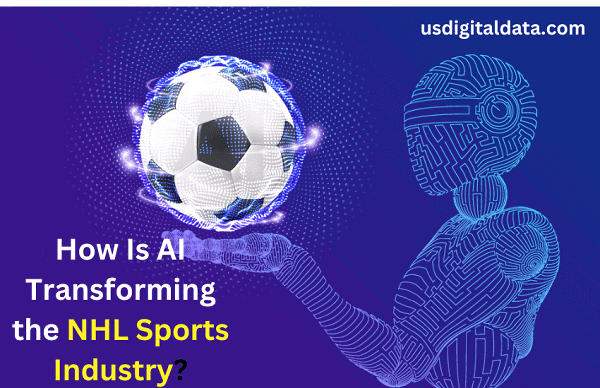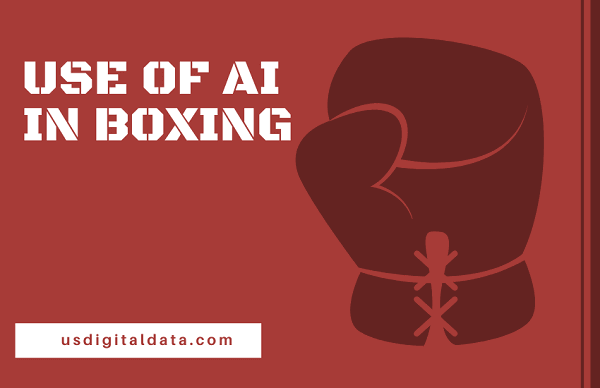How Is AI Transforming the NHL Sports Industry?

AI will alter how firms operate, and several industries have already felt its effects, with the sports industry being a new and welcome addition to casino news as well.
AI is increasingly being used in sports, from post-game analysis to assisting athletes in making decisions during games to enhancing the fan experience. Here are some of the more intriguing applications of AI in sports, focusing on the NHL.
Advertising Plans
This season, the NHL will air even more advertisements during its games. This year, all advertisements displayed on the boards during televised games will employ a new artificial intelligence (AI)-based technology known as “digitally enhanced dasher boards” (DED).
With this new technology, the advertisements on the boards are more visible and larger than ever before. It replaces the current advertisements on the boards.
Every 30 seconds, new advertisements are displayed. With this cycle, there will be more area during each game for ads. Also, large corporations can purchase successive board positions to introduce new products.
AI can also be used to determine the most effective advertising strategies based on the target audience’s demographics. AI can define the optimal periods for brand advertising based on the best gaming moments. Automated learning algorithms observe the actions of the players as well as the emotions and facial expressions of the spectators to assess the game’s most exciting moments.
Face off Winner Predictions
The face-off is one of the most important aspects of a hockey game. The victor can boost their team and directly affect the game’s outcome.
Face-off Probability is the first application of its type to utilize artificial intelligence (AI). AWS was used to analyze more than two hundred thousand face-offs and ten years of player data.
Face-off Probability was created by the National Hockey League and Amazon Web Services (AWS). It employs AI to provide analysts, fans, and teams with real-time predictions regarding face-offs. This is a significant technological advancement because it is the first time an AWS probability stat will be displayed live before the play rather than after it has occurred.
Face-off Probability predicts who will win the next face-off based on the players on the ice, the location of the face-off, and the game’s current state. The predictions are generated in less than a second and will continue to be developed until the game clock restarts.
Not only does the tool display the likelihood that the two players will face off, but it also displays other possible face-off combinations. This will assist broadcast teams in highlighting potential matchups, increasing audience enjoyment.
Scouting and Recruitment
AI can even be utilized in sports to evaluate the performance of potential new players. AI can assist sports clubs in monitoring the performance of their athletes, and they can use this data to determine whether to invest in a recruit’s future.
Performance data could employ more sophisticated metrics than simple statistics (runs, passes made, goals scored, etc.). Big Data and AI will make it much easier for sports administration to capture and measure indicators of future performance.
Enhanced Performance
Using AI and sensor technology in tandem can assist players in enhancing their abilities. In sports training, AI provides real-time feedback and creates individualized training programs for each participant. This increases the effectiveness of each activity for each individual.
AI analysis can be utilized to enhance the health and fitness of athletes. Wearable applications can also provide information regarding player tears and strains, which helps prevent players from becoming injured. AI can identify tactics, strategies, and vulnerability trends during a game.
Easier Analysis of Videos
The development of a system that employs artificial intelligence to analyze videos of hockey games has made significant progress.
More than 54,000 photographs from National Hockey League games were used to compile the largest dataset of its kind. Using this data, they taught AI algorithms to recognize jersey numbers in new photographs.
Members of the Vision and Image Processing (VIP) Lab at the University of Waterloo collaborate with Stathletes Inc. to develop artificial intelligence (AI) software to track player performance and provide additional data-driven insights.
Encoding the number 12 as a two-digit number and the sum of the single digits 1 and 2 enhanced the accuracy. This is known as “multi-task learning” in artificial intelligence.
The research team is also developing artificial intelligence that can see players on video, locate them on the ice, and determine what they are doing, like shooting or checking an opponent, as this will be integrated into a single system.
In recent years, detail-oriented analytics have helped hockey and other sports progress, but the majority of the labor is still performed by individuals monitoring broadcast video and taking notes.


